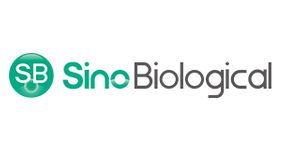Exploring Drug Targets in Neurodegenerative Diseases
Introduction
Life expectancy has increased globally over the last several decades. However, longer life expectancy comes with an increased risk of developing neurodegenerative diseases, such as Alzheimer’s disease (AD) and Parkinson’s disease (PD). Nearly 50 million people worldwide suffer from neurodegenerative disorders, and approximately 115 million individuals will be affected by 2050[1]. AD and PD progression debilitates patients, eventually resulting in the need for 24-h care. Although there are currently no effective treatments to stop or reverse AD or PD progression, there is a breadth of ongoing research to understand the etiology and pathogenesis of neurodegenerative diseases. With perseverance, this work will eventually lead to the development of new treatments and cures.
Understanding key players like amyloid precursor protein (APP) in AD and α-Syn in PD is critical in the quest for therapies. This article primarily discusses the current state of the field regarding important protein targets in various neurodegenerative disorders, including AD and PD.
Drug Targets in AD
AD is the most common neurodegenerative disorder. It is characterized by progressive cognitive and behavioral impairments and ultimately results in dementia[2]. AD’s pathological hallmarks include extracellular amyloid plaques that consist of amyloid beta (Aβ) peptides and intracellular neurofibrillary tangles composed of hyperphosphorylated tau proteins (Figure 1). Aβ is produced from APP through sequential cleavages by β- and γ-secretases, resulting in a series of 39-43 amino acid-containing Aβ peptides. These Aβs - in particular Aβ42 - are prone to form dimers, oligomers, and insoluble fibril aggregates that eventually deposit as amyloid plaques. Compared with Aβ40, Aβ42 is more commonly found in AD plaques. Aβ42, together with total tau (t-tau) and phosphorylated tau (p-tau), are widely accepted as three diagnostic AD biomarkers[3, 4].
Figure 1: Abnormal Accumulation of Amyloid Beta (Aβ) and Tau
Over the past years, many drug discovery efforts have been undertaken to slow or prevent AD progression by inhibiting the formation of Aβs and their resulting plaques (Table 1). Solanezumab is a humanized monoclonal antibody that targets the mid-domain of the Aβ peptide (Aβ13-28) to increase Aβ clearance. However, Eli Lilly reported in 2016 that the drug failed to slow cognitive decline in a Phase 3 clinical trial. A similar failure happened in 2020 to Roche’s semorinemab, a human immunoglobin G (IgG) 4 antibody designed to target the tau protein’s N-terminal portion and slow its spread between neurons.
Table 1: Development Status of Partial AD Drugs
A series of clinical trial failures with anti-Aβ and anti-tau monoclonal antibodies has sowed doubts regarding this strategy and has precipitated the pursuit of other novel targets[5], such as the β-site APP cleaving enzymes (BACE) 1 and 2, and gamma secretase. BACE1 and BACE2 are small molecule therapeutic targets for AD because they process APP into neurotoxic Aβ peptides. Modulating these protein activity has been a recent focus of AD drug discovery efforts.
To support AD drug discovery, Sino Biological has developed premium recombinant target proteins and primary antibodies that cover APP, BACE1, and BACE2. Please click here to view more products for AD research.
Drug Targets in PD
Following AD, PD is the second most common neurodegenerative disorder. PD is characterized by the loss of dopaminergic neurons in the substantia nigra, as well as Lewy bodies and Lewy neurites which consist of alpha-synuclein (α-Syn)[6, 7] (Figure 2). α-Syn, encoded by the SNCA gene, is abundantly and ubiquitously expressed throughout the brain, primarily localized within neuronal presynaptic regions. Aside from α-Syn, the synuclein family includes β-and γ-synuclein. Point mutations, duplications, and even triplication mutations in the SNCA gene are highly associated with PD [8, 9].
Figure 2: Lewy Bodies and Lewy Neurites in the Brain
α-Syn is a potential therapeutic target for the development of PD-modifying therapies, with several anti-α-Syn monoclonal antibodies actively being investigated. Roche’s prasinezumab, a humanized IgG1 monoclonal antibody directed against aggregated α-Syn, entered Phase 2b studies in May 2021[10]. α-Syn vaccination is another effective strategy to reduce α-Syn accumulation and improve motor and cognitive behavior. Affitope PD01A, an experimental vaccine, is a synthetic peptide that mimics the C-terminal residues of α-Syn (110-130). In mice, Affitope PD01A immunization reduced α-Syn accumulation in the substantia nigra and tyrosine hydroxylase-positive fibers in the striatum[11].
Another promising target for PD treatment is glutamate receptors, which play critical roles in modulating neuronal excitability, neurotransmitter release, and long-term synaptic plasticity. Metabotropic glutamate receptor (mGluR) 5 antagonists, as well as group II mGluR and mGluR4 agonists have shown pharmacological efficiency in various animal models of PD[12]. Additional novel PD drug targets have been identified, such as molecular chaperones, SV2C, and LRRK2. There has also been interest in autophagy-lysosomal pathways, which may serve as potential therapeutic target in PD[13].
Sino Biological has produced high-quality α-Syn and β-Syn proteins and antibodies for PD drug discovery. Please click here to find more research reagents for therapeutic targets of neurodegenerative diseases.
Conclusion
Due to complex and poorly understood biological mechanisms, discovering safe and effective therapies for neurodegenerative disorders has been a big challenge for drug discovery scientists[14]. Nevertheless, research persists to understand the causes of neurodegenerative disorders and identify novel therapeutic strategies. A variety of treatments, such as monoclonal antibodies, oligonucleotides, and cell therapies, are under preclinical or clinical investigation. These efforts will bring considerable opportunities for the deceleration, prevention, and eventual cure of these devastating illnesses.
References













